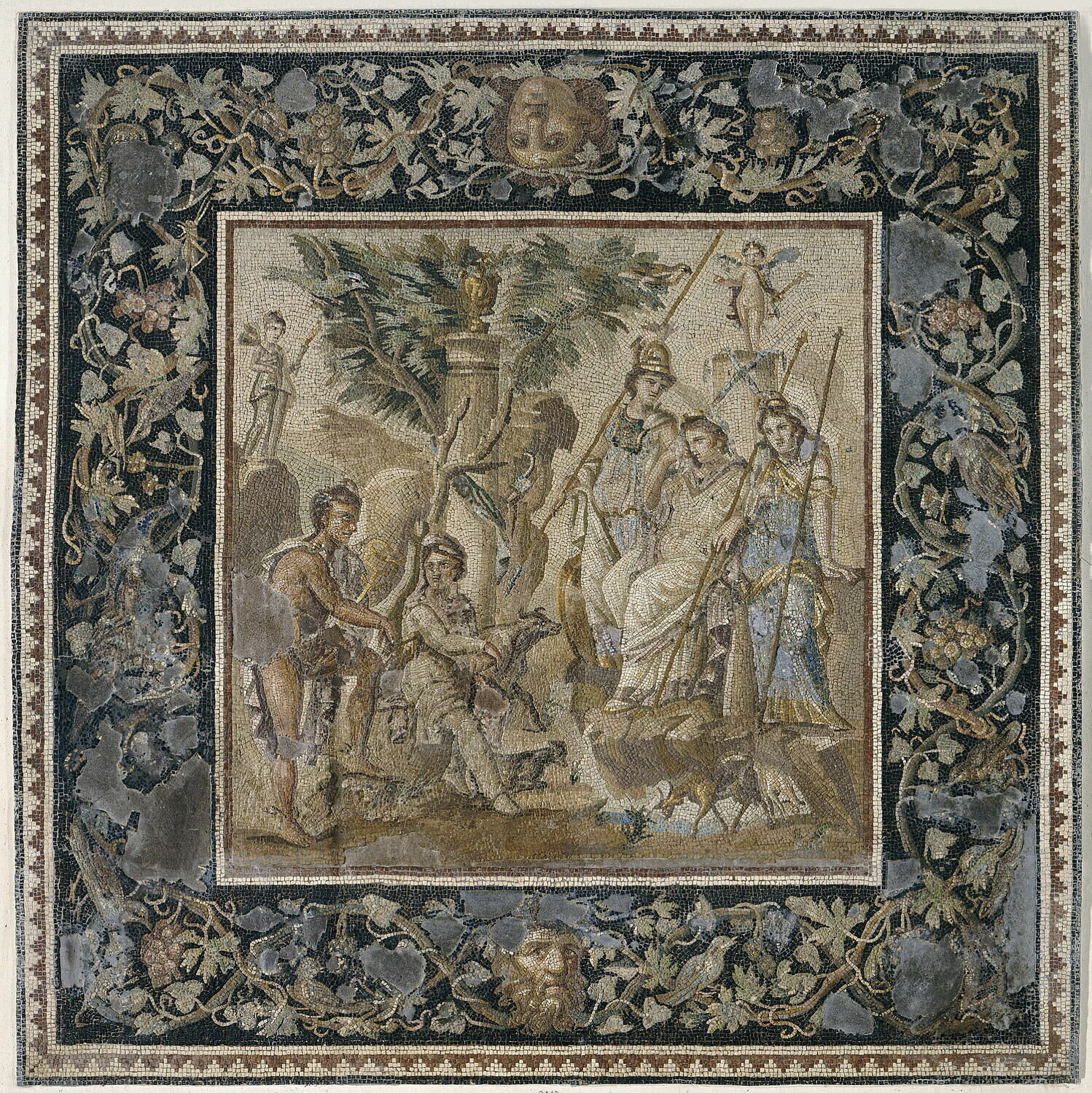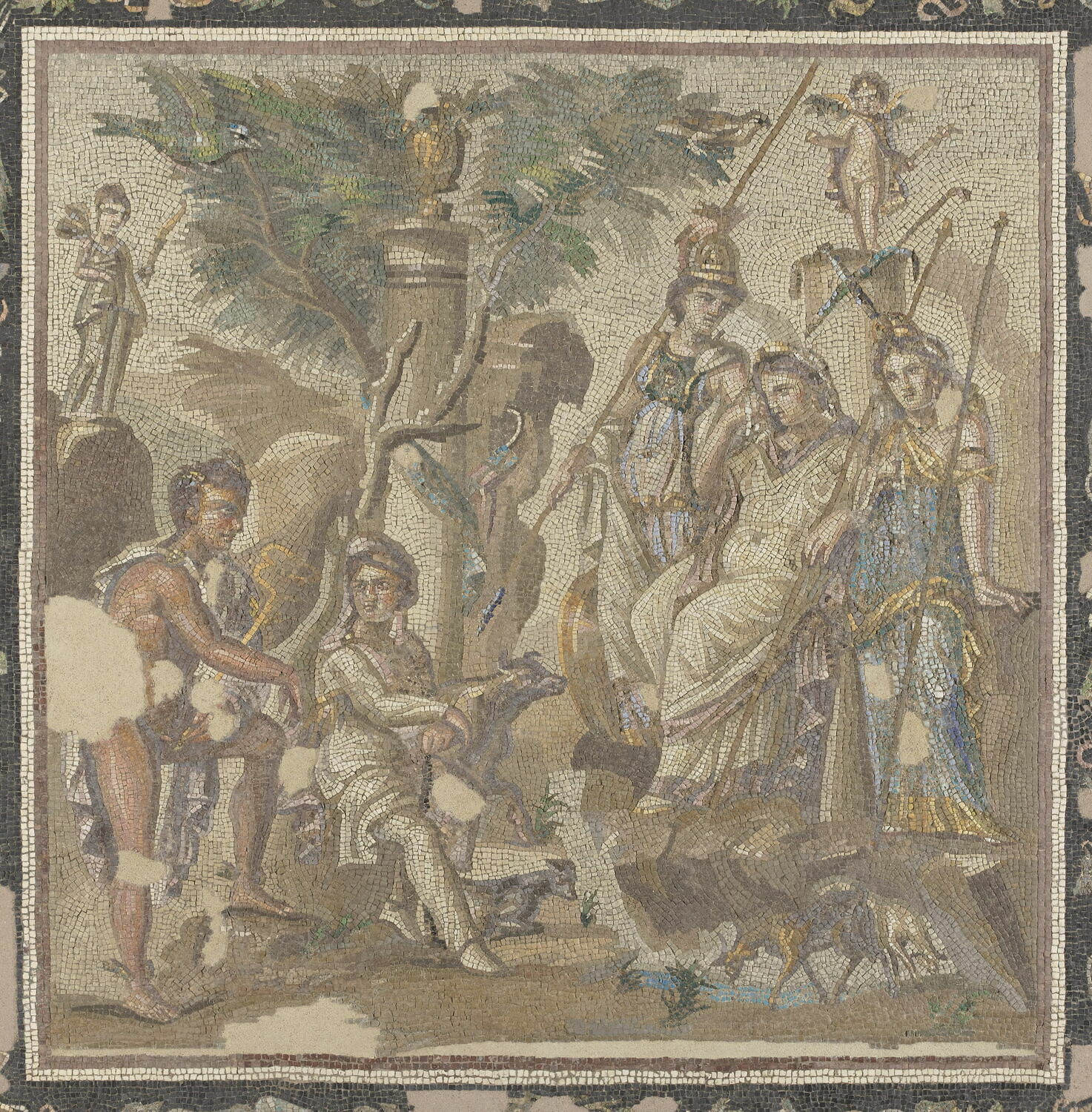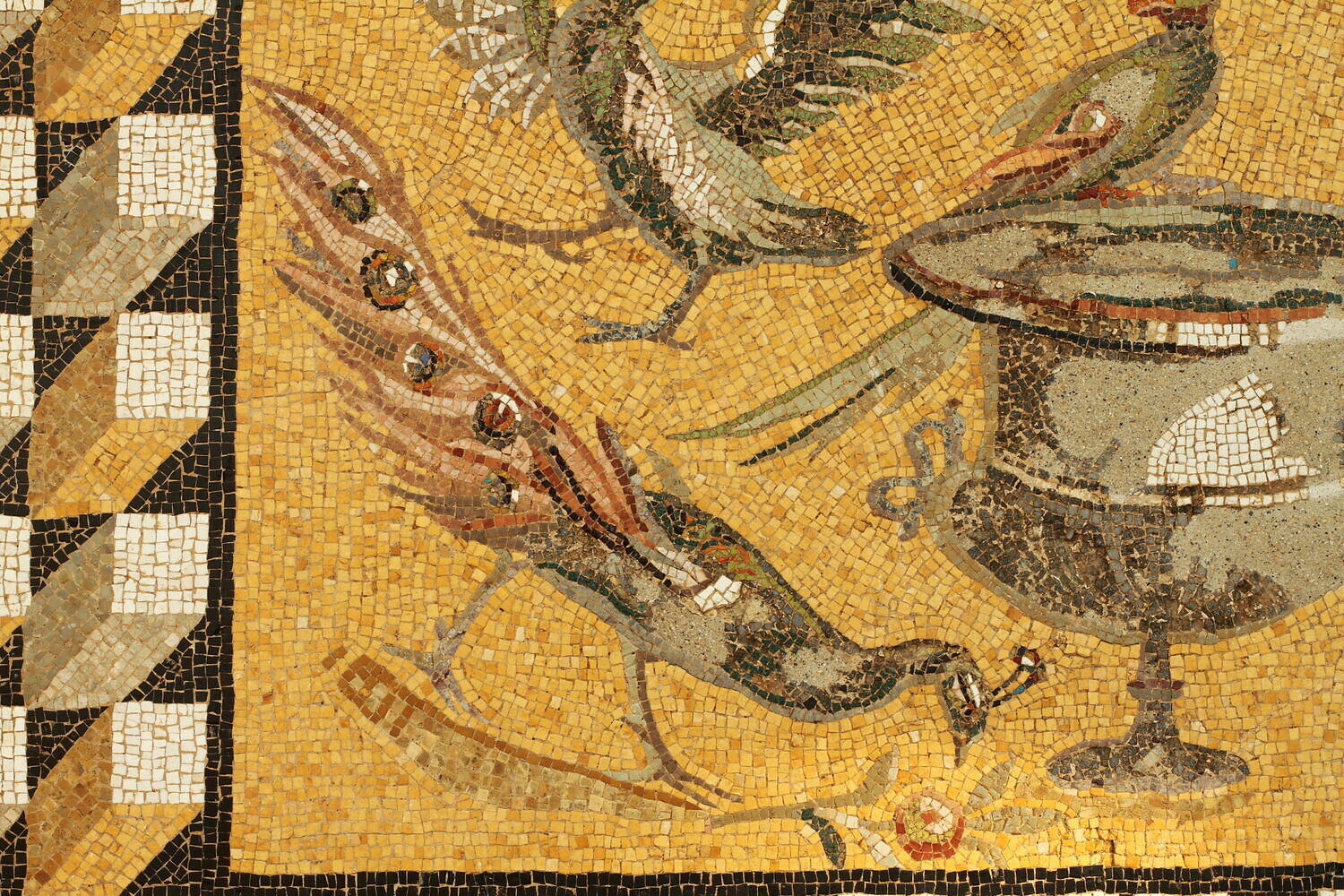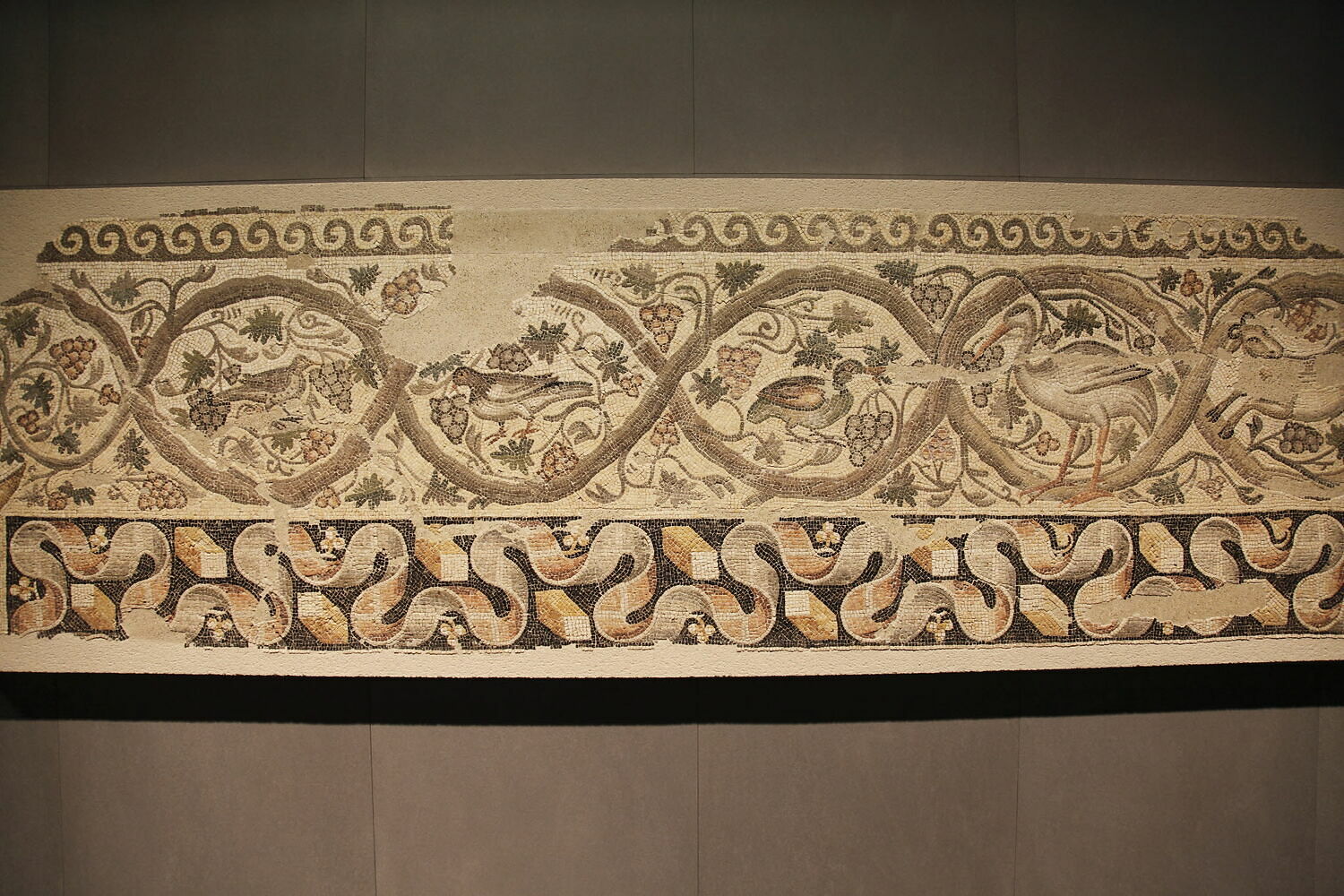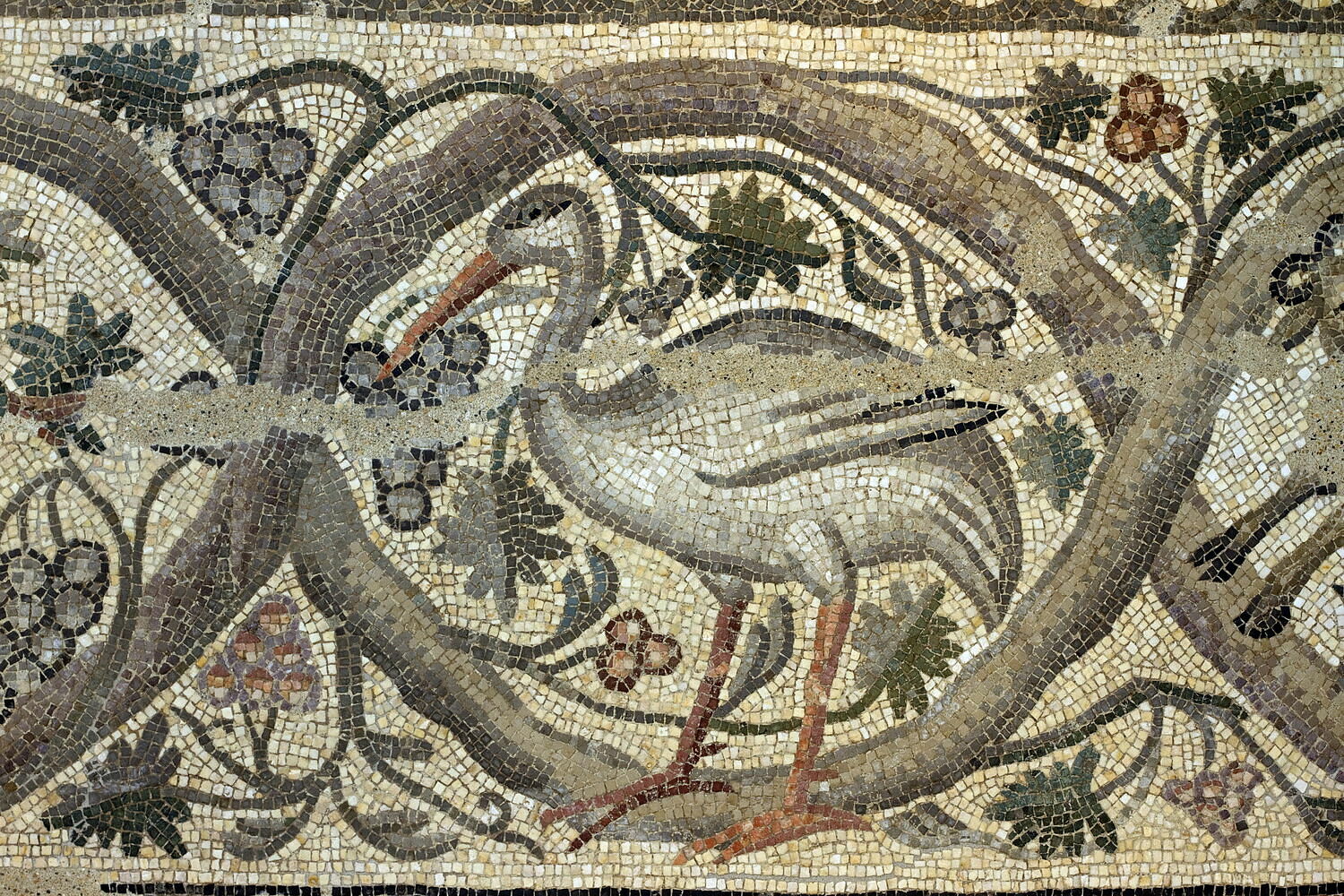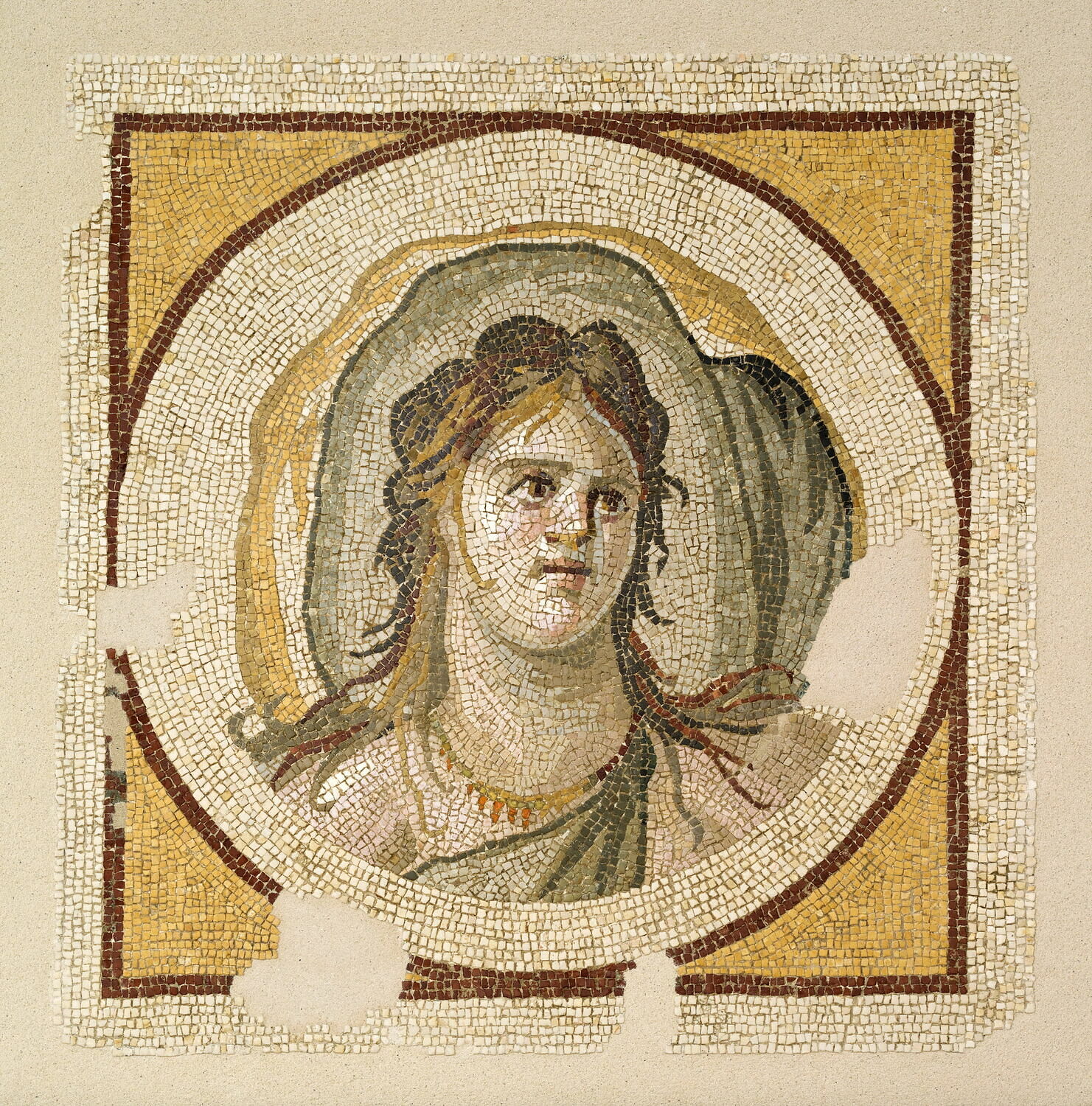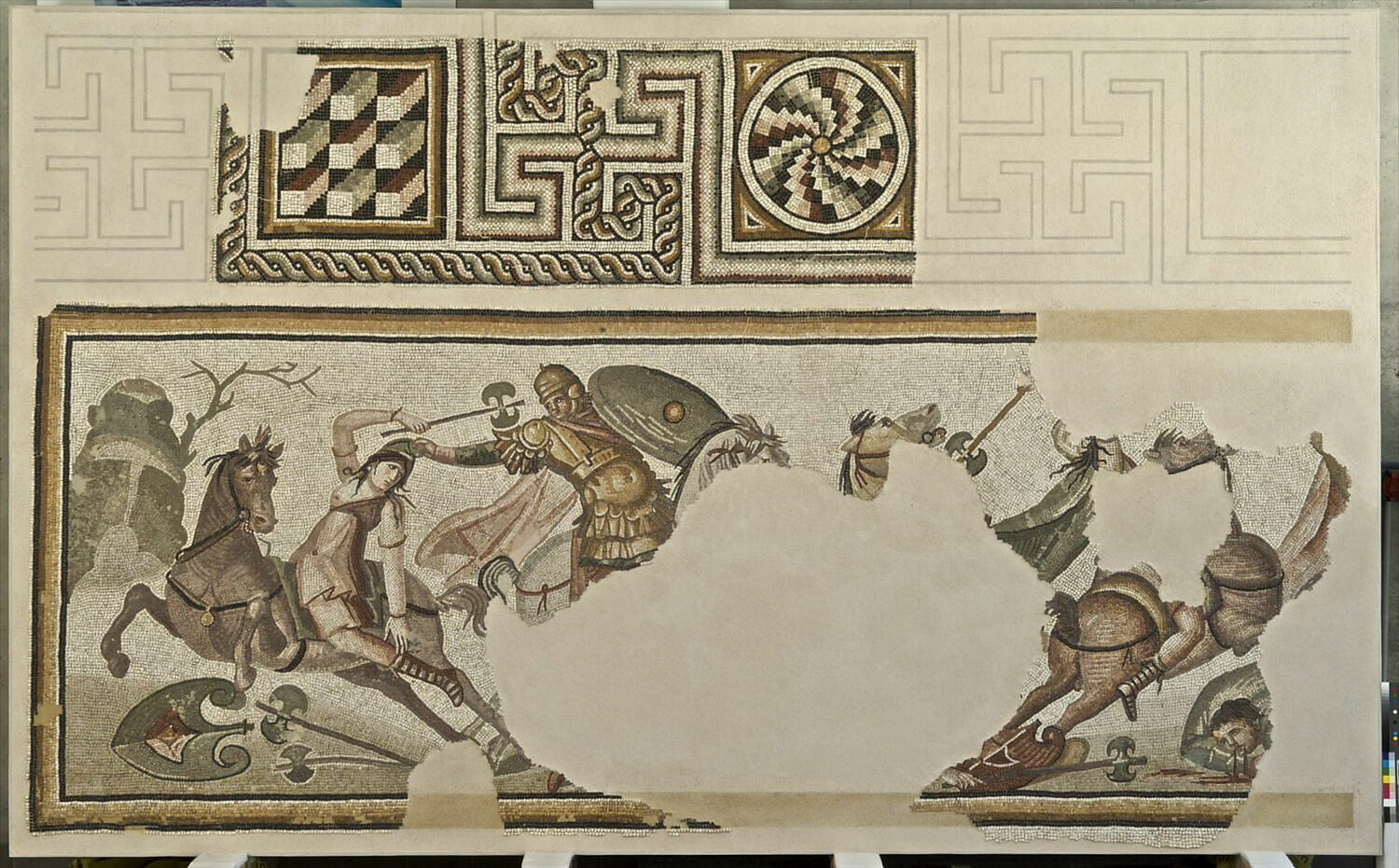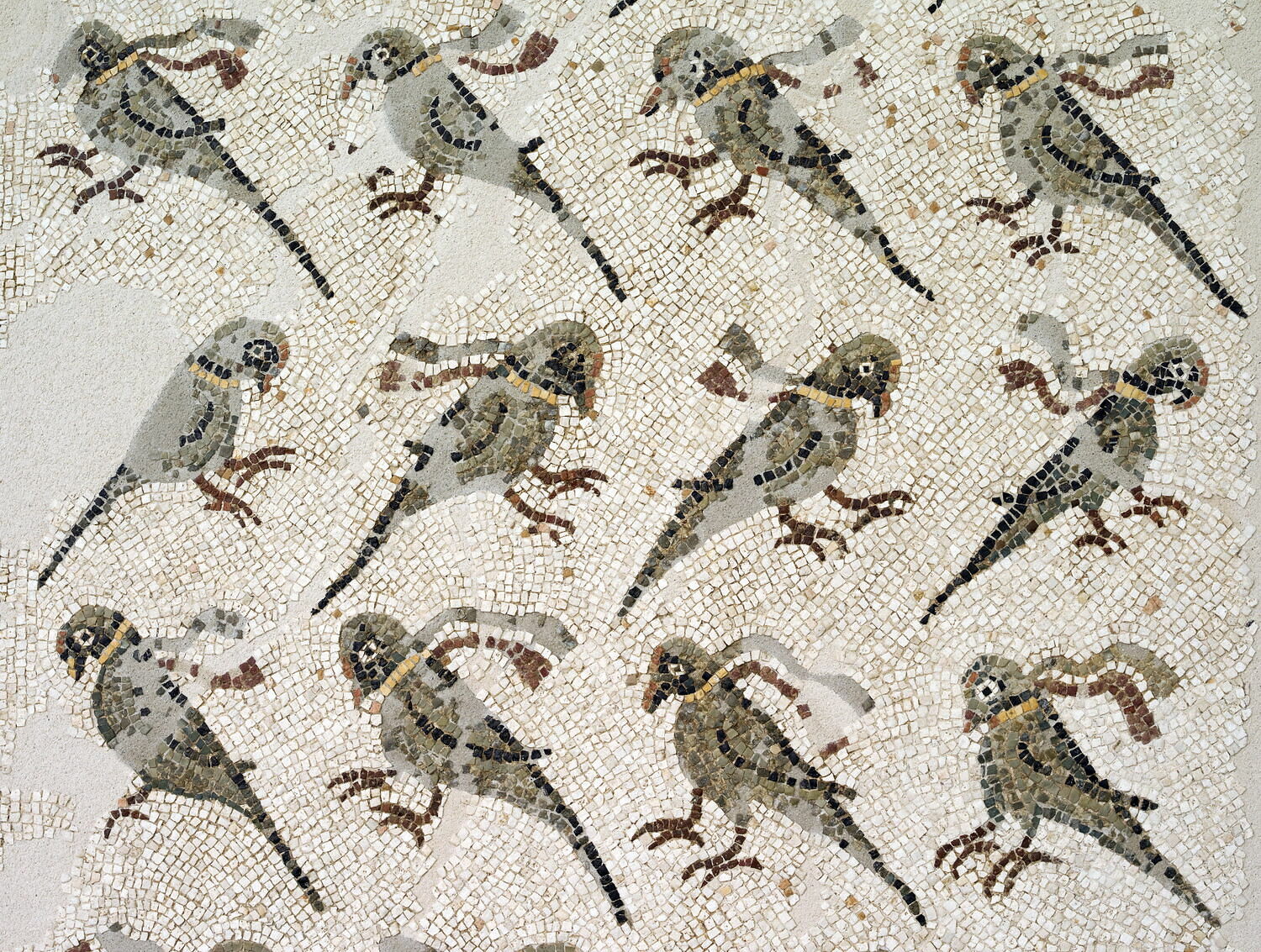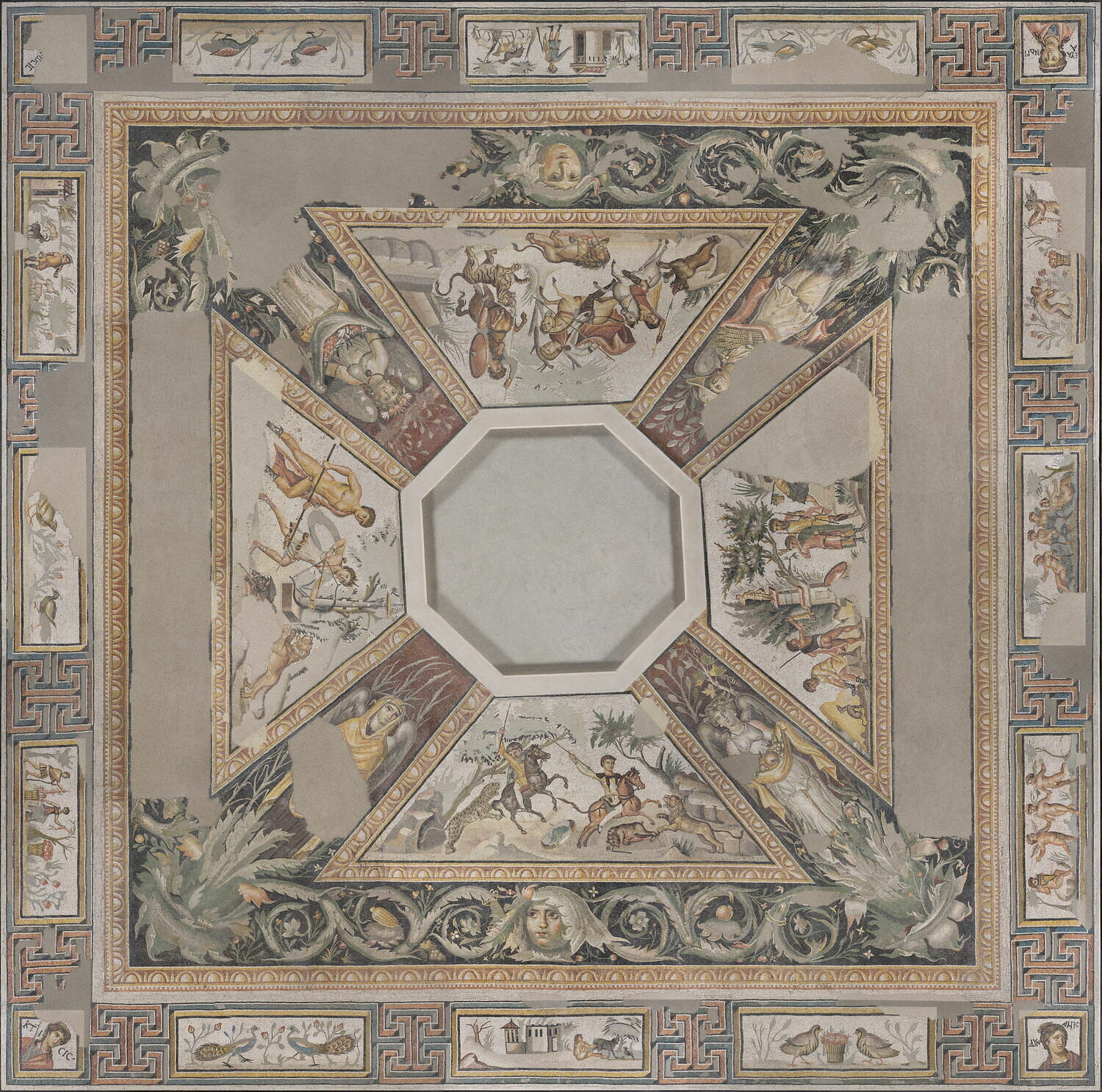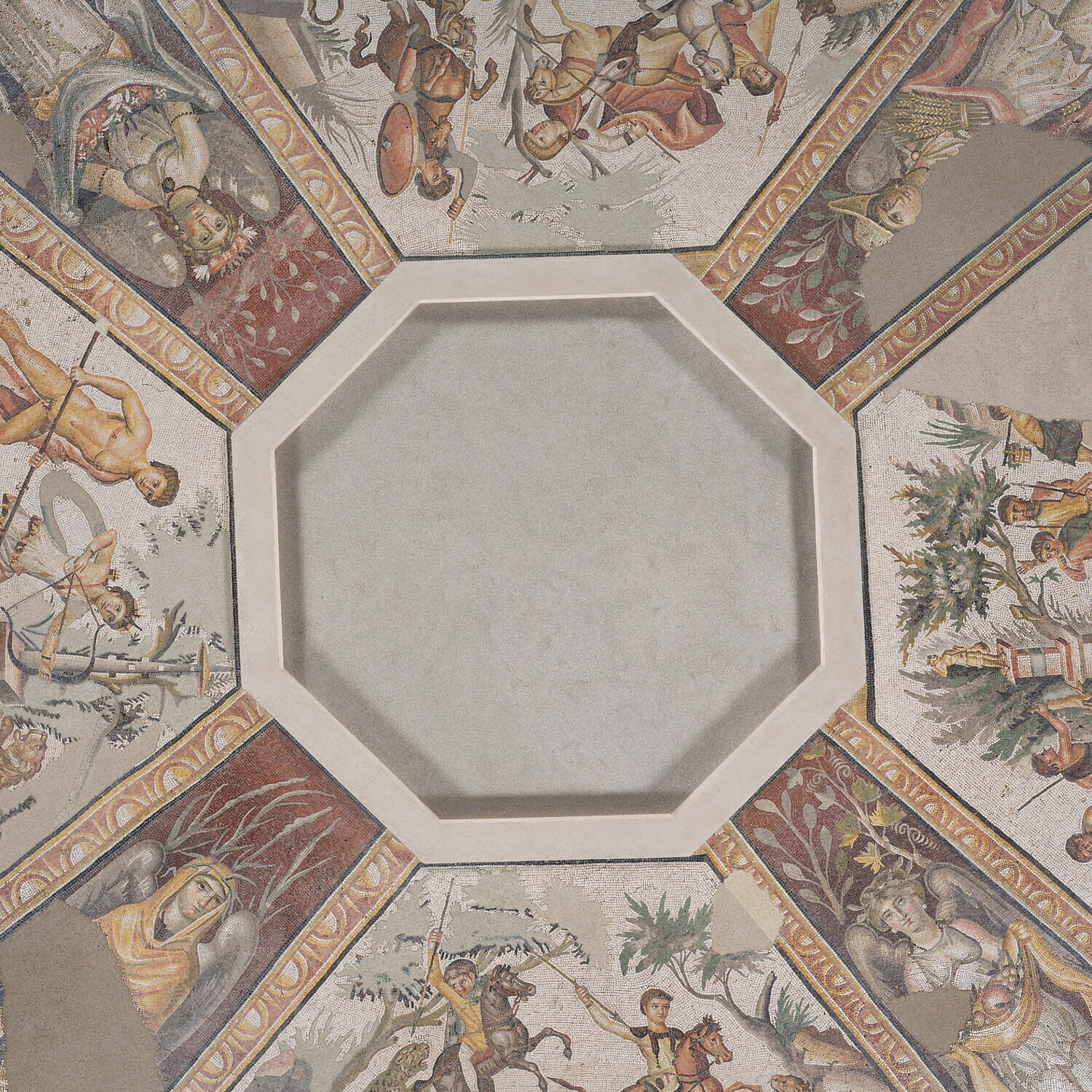From Antioch to Louvre: All about stolen heritage
The first guest of our stolen heritage series is Antiocheia, which was found by Seleucus I in 300 B.C., according to ancient records

EXCLUSIVE BY KORAY ERDOGAN — Antiocheia, the magnificent city of the Hellenistic and Roman periods, located within the borders of the central district of Antakya in Hatay Province stands as an ancient settlement with an uninterrupted history of habitation since its inception.
Antioch was founded by Seleucus I in 300 B.C., according to ancient records.
The city was founded on the rocky slope and plain between the northwestern and western slopes of Silpios, known today as Habib-i Nejjar Mountain and the Orontes, which is now known as the Asi River.
Its layout was meticulously crafted by the architect Xenarius.
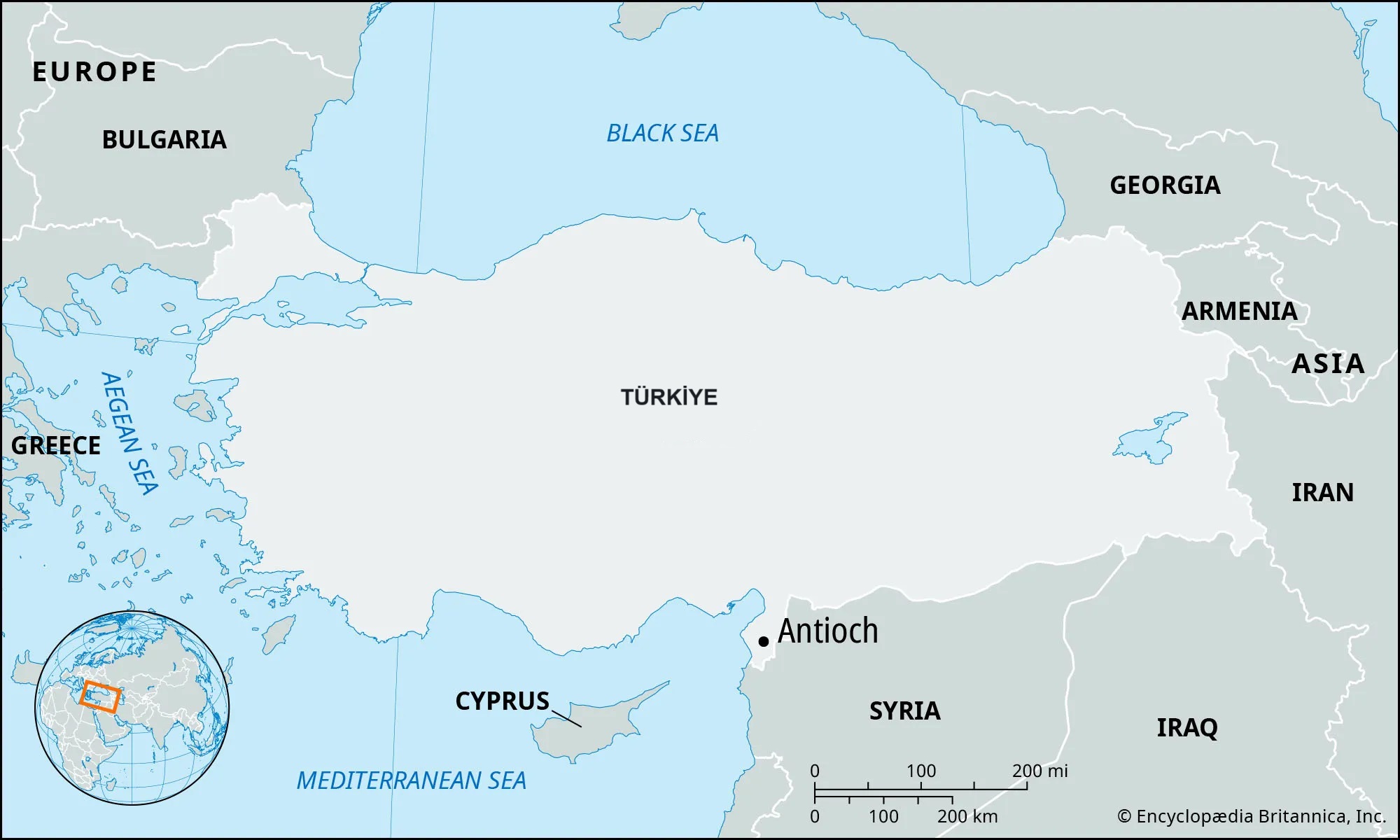
Map showing Antioch, Encyclopædia Britannica, Inc.
To distinguish it from other cities with the same name, it was called Antiocheia on the Asi River, Antiocheia ad Orontem, and Antiocheia on the Daphne, Antiocheia Epi Daphne.
Antioch, often referred to as Antioch the Great, Antiocheia Megale, or Orientis Apichem Pulchrum in the fourth century A.D., earned acclaim as the crown jewel and queen of the East.
During the Roman era, the city served as the heart of the eastern provinces, renowned for its riches, flourishing trade, intellectual depth and established institutions.
Founded during the Hellenistic Period, Antioch thrived for a millennium as a major center of the East.
Reaching its peak in late antiquity, it rivaled the likes of Rome, Alexandria, Constantinople, and even the future Istanbul in grandeur. However, a devastating earthquake in 526 A.D. severely damaged the city. Though it joined the Islamic world in 638 A.D., Antioch's influence gradually waned.
The Louvre Museum in Paris, the capital of France, is huge and houses unique artifacts brought from all over the world. It also has heritage stolen from Antioch.
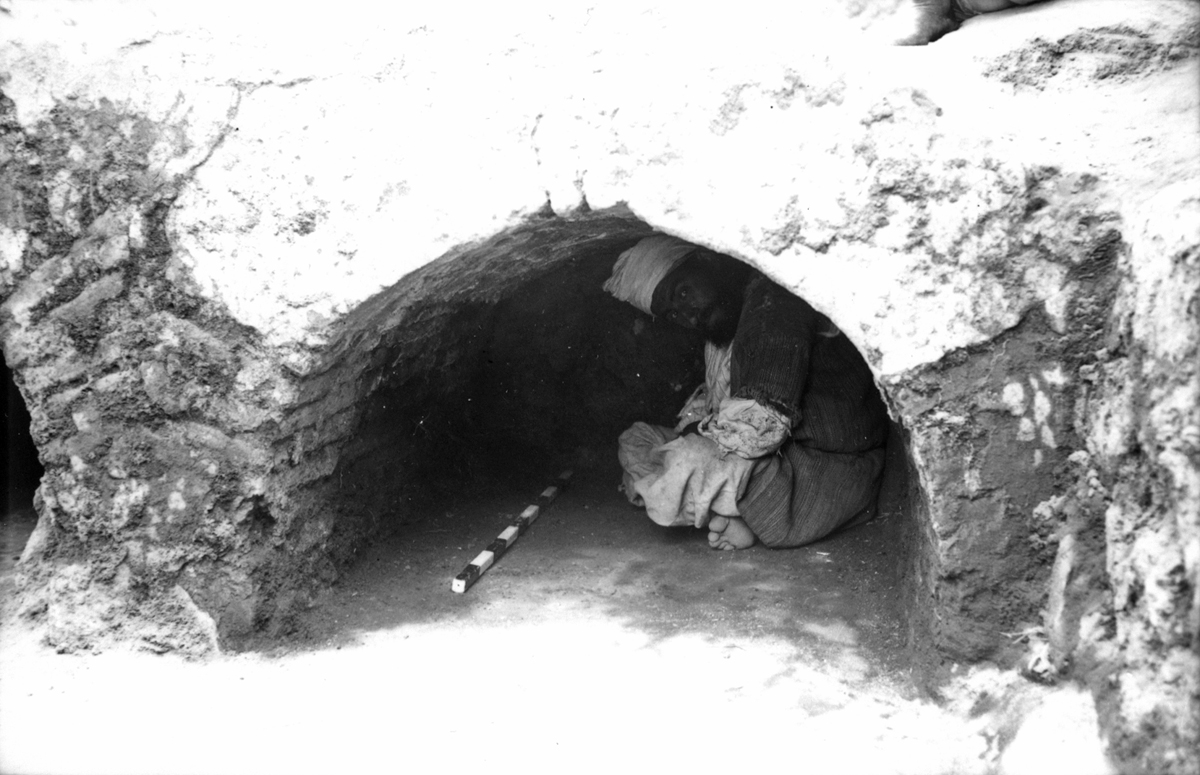
Archaeological excavations, 1932, Antiocheia, Princeton University Archive
Between 1932 and 1939, during the French mandate period: "The Committee for the Excavation of Antioch and Its Vicinity," which included universities and institutions such as Princeton University, the Worcester Art Museum, the Baltimore Museum of Art and the Louvre Museum, carried out systematic excavations in Antioch, Seleukeia Pieria, now Samandag and Daphne, now Harbiye.

Workmen washing pottery at the field headquarters, 1936, Antiocheia, Princeton University Archive
More than 300 mosaic floor coverings unearthed during the excavations were published as a corpus by D. Levi.
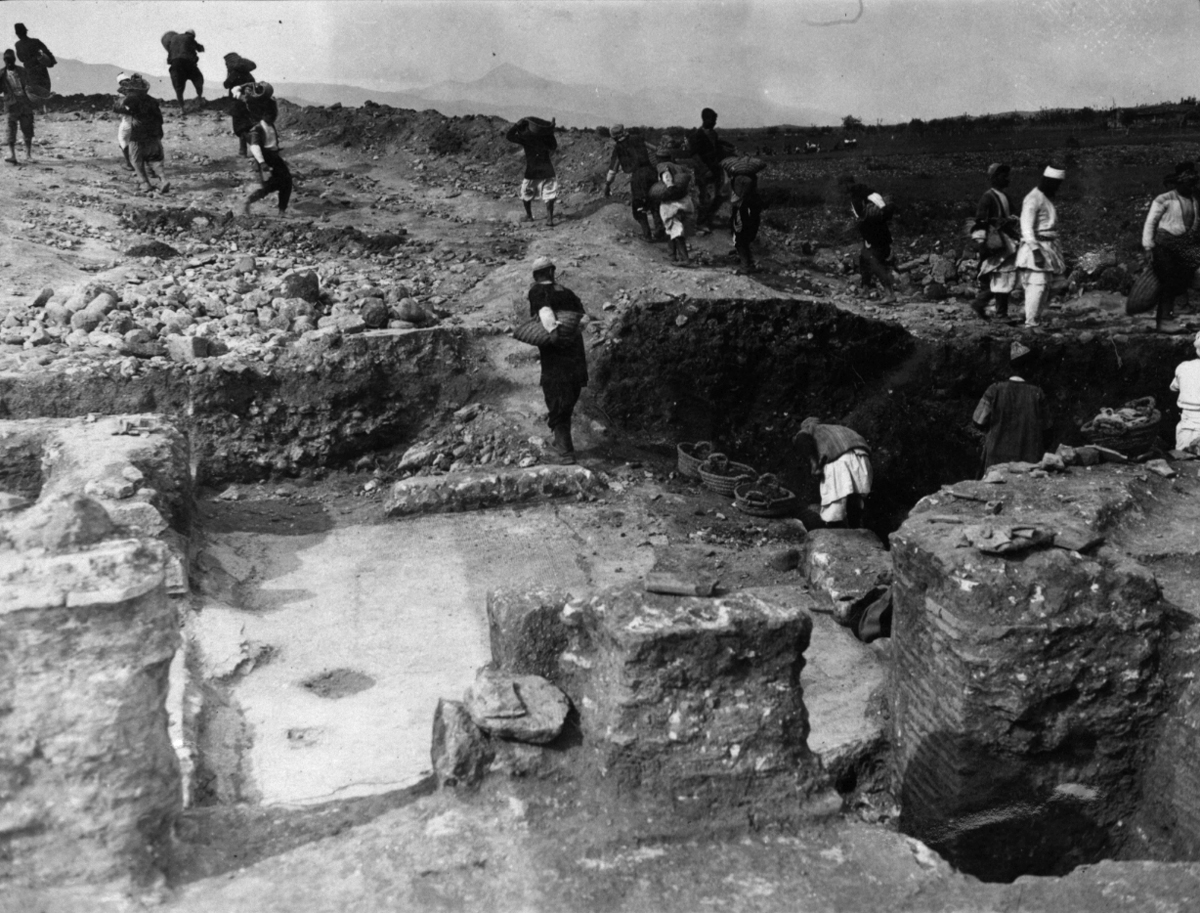
Archaeological excavations, 1933, Antiocheia, Princeton University Archive
The Hatay Archaeology Museum now houses mosaics once scattered across nearly 30 museums and private collections worldwide.
Among these mosaics, the Judgment of Paris Mosaic was discovered in 1932, the Kantharos and Birds Mosaic in 1933, the Birds Mosaic, the Okeanid Mosaic, the Amazonomachia Mosaic and the Phoenix Mosaic in 1934, the Parrots Mosaic and the Seasons Mosaic in 1935.

Collage of some of the stolen mosaics, Louvre Museum
The Judgment of Paris Mosaic, dating back to the first half of the second century A.D., was discovered in 1932 in the Atrium House in the ancient city of Antioch. Covering an area of approximately 4 square meters, the mosaic floor has been in the Louvre Museum since 1936.
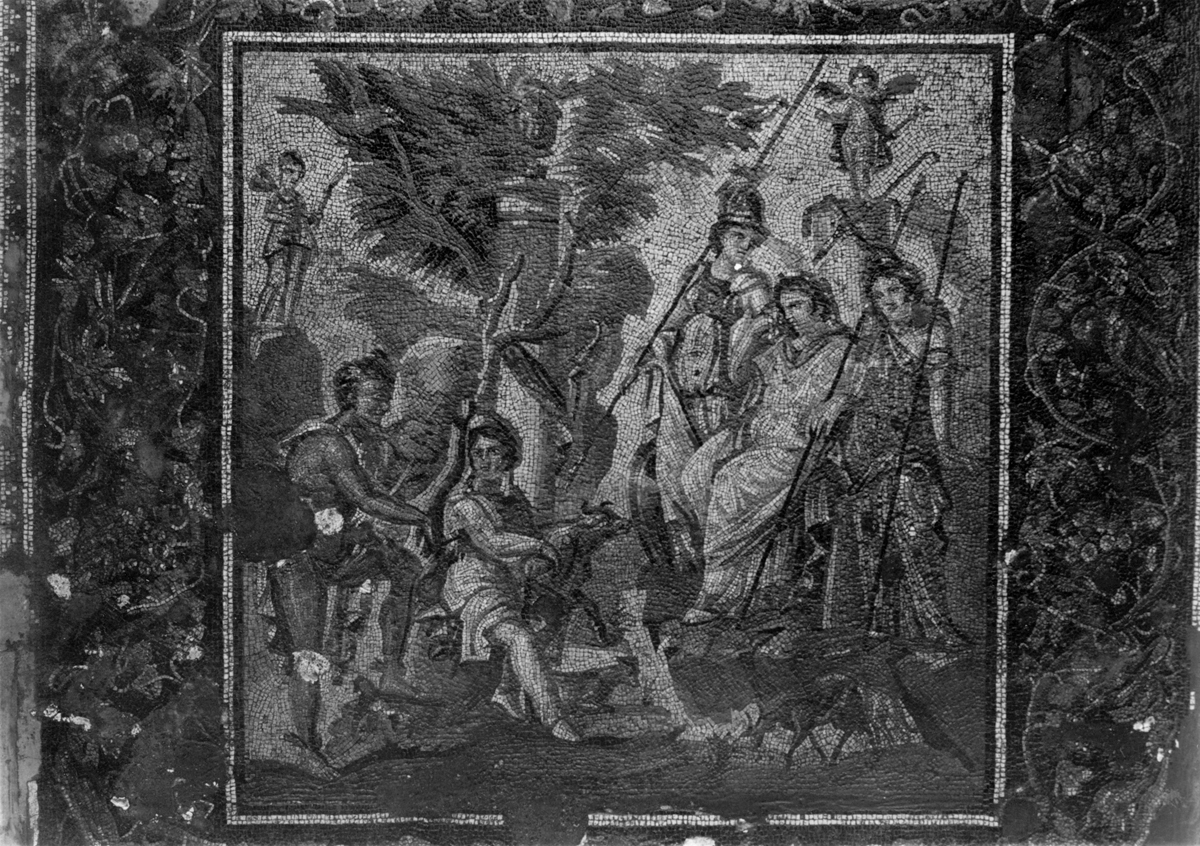
The Judgment of Paris Mosaic as soon as it was found during archaeological excavations, 1932, Antiocheia, Princeton University Archive
The Judgment of Paris Mosaic, Louvre Museum
The legendary story of the Judgment of Paris is depicted in a square area surrounded by a border of vines and ivy leaves filled with birds. The motif surrounding the mosaic panel is thought to have been inspired by a second-century B.C. mosaic for King Attalos' palace in Pergamon.
The mosaic depicts a scene where the young prince Paris tends to his flocks on the rugged slopes of Mount Ida, grappling with the decision of which of the three goddesses is the fairest. Standing beside him is Hermes, the messenger of the gods. Across from him stands Athena, the embodiment of wisdom, adorned in her Aegis, helmet, and spear. Hera sits prominently in the center, emanating authority, while Aphrodite exudes confidence as she lounges indifferently on a nearby rock. The entire tableau unfolds under the watchful eyes of Eros and Psyche.
The Judgment of Paris Mosaic, Louvre Museum
The Judgment of Paris mosaic, along with several other mosaic panels, adorned the dining room in the home of a wealthy Roman in Antioch. Other panels, distributed to different museums, depict a Satyr, a Maenad, a drinking contest between Dionysus and Heracles, and Adonis and Aphrodite.
Found in 1933 in the ancient city of Daphne, the Kantharos and Birds Mosaic dates to the first half of the third century A.D.

The Kantharos and Birds Mosaic as soon as it was found during archaeological excavations, 1933, Daphne, Princeton University Archive
Covering an area of approximately 3 square meters, the mosaic floor has been in the Louvre Museum since 1936.
The Kantharos and Birds Mosaic, Louvre Museum
Surrounded by a border decorated with geometric motifs, the mosaic's yellow-grounded center features various birds positioned around a Kantharos, a Greek cup.
The Kantharos and Birds Mosaic, Louvre Museum
Peacocks, herons, partridges, ducks, and blackbirds are scattered around the kantharos, while a graceful parrot stands out above them.
The Birds Mosaic was discovered in 1934 in the ancient city of Daphne in Hatay and dates to the first half of the sixth century A.D.
The Birds Mosaic, Louvre Museum
Covering an area of approximately 4 square meters, the mosaic floor has been in the Louvre Museum since 1936.
Found in the villa of Constantine in the ancient city of Daphne, the floor mosaic once adorned the floor of the courtyard of this villa.
The Birds Mosaic, Louvre Museum
The floor mosaic, framed by a border decorated with wavy bands and geometric motifs, features heron, duck, thrush, blackbird and mountain goat figures among vine branches and grape clusters.
Found in 1934 in the ancient city of Daphne in Hatay, the Okeanid Mosaic dates to the first quarter of the third century A.D. It has been in the Louvre Museum since 1936, while the rest of the mosaic floor is on display at the Baltimore Museum of Art.
Okeanid Mosaic, Louvre Museum
The panel, housed within the Psykheler Boat House, spans approximately 1.2 square meters. At its center, there is a depiction of an Okeanid bust with flowing hair adorned in a tunic and a necklace gracing its neck.
The Amazonomachy Mosaic was discovered in 1934 in Daphne and dates to the second half of the fourth century A.D. Covering an area of approximately 10 square meters, the mosaic floor has been in the Louvre Museum since 1936.
The Amazonomachy Mosaic, Louvre Museum
A mosaic panel, crafted using the tessellatum technique and in a damaged state, depicts the Amazonomachy. The scene portrays a fierce battle between a Phrygian Amazon and a Greek soldier, both mounted on horseback. In the background, a cascading waterfall adds a dynamic element to the composition.
Found in 1934 in the ancient city of Daphne, the Phoenix Mosaic dates to the last quarter of the fifth century A.D.
The Phoenix Mosaic, Louvre Museum
The mosaic floor covers an area of about 25 square meters and has been in the Louvre Museum since 1936.
It once adorned the floor of the open courtyard of a house built in the Hellenistic period and remodeled several times. The mosaic panel, which was largely destroyed when it was discovered, has been restored on a smaller scale.
The center of the mosaic panel, surrounded by a border decorated with winged mountain goats, depicts a phoenix on a bed of rosebuds.
The winged ibexes, decorative elements taken from Sassanid royal iconography, are associated with the phoenix, one of the symbols of immortality in Roman imperial religion.
Found in 1935 in the ancient city of Daphne, the Parrots Mosaic dates to the first half of the sixth century A.D.

The Parrots Mosaic as soon as it was found during archaeological excavations, 1935, Daphne, Princeton University Archive
In the center of the mosaic panel, surrounded by a black border, 20 parrots are depicted alternately looking left and right.
The Parrots Mosaic, Louvre Museum
The Seasons Mosaic, which dates to around 325 A.D., was found in 1935 in the villa of Constantine in the ancient city of Daphne.

The Seasons Mosaic as soon as it was found during archaeological excavations, 1935, Daphne, Princeton University Archive
The mosaic floor depicting the seasons and hunting scenes has been in the Louvre Museum since 1939.
The Seasons Mosaic, Louvre Museum
This mosaic, which once decorated the floor of the villa's open-air courtyard, contains allegories of the seasons and hunting scenes. Its panels are framed by a border of scenes of pastoral life.
The Seasons Mosaic, Louvre Museum
Real and mythological hunting scenes are associated with the theme of abundance. Vine shoots, grape bunches, and golden shoots decorate the acanthus in places, while fruits and flowers fill the spirals.
The outer edge of the mosaic depicts pastoral scenes of "Virtues" and feasting Erots, peasants making flower garlands or shepherds with their flocks.
In Anatolia, a land rich in history, countless civilizations have thrived for thousands of years. Our “Stolen Heritage” series will delve into the captivating narrative of this storied geography.


